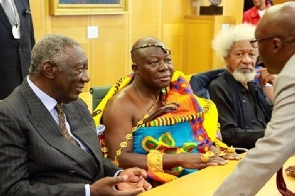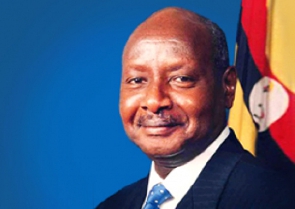Opinions of Monday, 31 October 2011
Columnist: Casely-Hayford, Sydney
The Composite Index of Economic Activity is Improving
, So What, says the Informal Sector
By Sydney Casely-Hayford, Sydney@bizghana.com
The Bank of Ghana (BoG) uses an aggregate of indexes, grouped and called the Composite Index of Economic Activity (CIEA) to guide the Bank’s Monetary Policy Committee in its bi-monthly report and policy interest rate setting.
The CIEA gets little mention in the financial press compared to its more well-known counterpart the Gross Domestic Product (GDP). The GDP is produced by the Ghana Statistical Service (GSS) and the CIEA is a BoG product. However, according to the Monetary Policy Analysis Division of the BoG, the CIEA tracks the GDP very closely and is taken by the BoG as a very good indicator of business confidence.
Once a month the Monetary Policy Analysis Division (MPAD) of the BoG undertakes a real sector survey of the economy.
Let me explain the CIEA a little more.
In 2003, the analysts at 1 Thorpe Road, High Street (that is the official address of the Bank of Ghana) produced a working paper to devise a means of assessing the impact of monetary policy actions on the real sector of the economy. The eventual single CIEA index is a composite of 10 indexes, which reflect the business and economic activity in the country.
These ten indexes measure Electricity Consumption, Commodity Exports, Commodity Imports, Sales of key selected companies in Ghana, Employment Growth, Tourist Arrivals, Port Harbour Operations, Cement production, Domestic VAT and Deposit Money Banks credit to the private sector.
Added together and weighted for impact, each index contributes to the final composite index. The largest 4 contributors to the index are Domestic VAT – .392, Domestic Bank Credit to the private sector – .337 and Electricity Consumption and Employment Growth – .19 each. The index is in its 11th year. Planning forward, the BoG expects to eventually break the index into two parts, creating a Coincident Economic Index (CEI) to monitor current movement of overall economic activity to inform policy makers of “where the economy at” and a Leading Economic Index (LEI) to provide early signals of the movement in the economy or the direction or drift of the economy.
On a year-on-year basis the CIEA grew 20.5%. In 2001 it was 2.8%. This represents the highest second quarter year-on-year growth in the 11-year cycle of the index. The previous high was in the second quarter of 2008 when the index hit 18.4%.
But recently, the MPC of the BoG decided to keep its Central Policy Rate at 12.5%. This despite reports that the macro environment is good, inflation is excellent at 8.41%, 91-day treasury bills are at a low 9.3% and interest rates are coming down (not too sure about that one). Import cover is at 3.8 months and the IMF and World Bank think we are doing great.
The White man says we are doing okay, so why am I fretting?
An aside to all this. Import cover is 3.8months or $5.3billion as at October 2011. We need $22million to satisfy political confidence in the electoral process. What will happen if we reduce the import cover by half a day ($22million), sacrifice a little import cover and buy a lot of voting security? Isn’t election fever and threats to kill each other one of the most perturbing cycles we have every 4 years? Better still, why not take $22million out of the Stabilisation fund and allocate that to the Electoral Commission? Is that not a novel idea? Use the stabilization fund to create stability? I will give any MP who opposes this a resounding “F” a la Africa Watch.
But back to the CIEA and where I have my conundrum. We are not doing okay. With all indicators pointing up and up, why are interest rates stuck so high and why is the BoG not using one of its key weapons to pressure the rates down? It might as well have dropped the rate and made it a true moral suasion issue. Banks are still charging SMEs between 25% and 30% for loans. Savings and deposit rates hover between 4% and 8% and bank spreads are still greater than 10%.
Bank financial indicators are improving year-on-year. Capital Adequacy ratios (currently 17.5%) indicate that banks are well capitalized and solvent. Even non-performing loans ratios have come down from 18.6% to 16.4%. Inward remittances are still strong, close to $10billion as at August 2011. Yet affordable credit is a big problem for businesses, many of who are drowning in debt and employment is stagnated because no new manufacturing is opening up. Banks are not offering Term Loans especially in the technology and light industry sectors, but veer towards a quick profit from short-term lines for Trade Merchants.
Bank of Ghana MPC report, volume 6, no. 4/2011 issued in September 2011 for activity up to August 2011 raises 2 key points. On Business Confidence, the index fell from 106.6 to 104.1. The survey showed that businesses were uncertain overall but particularly as regards economic growth prospects and industry and company prospects; and they expressed low sentiment of economic progress.
In the same report, on Labour Market conditions, year-on-year advertised job vacancies plummeted 13%. Worse than this, advertised job vacancies in the Agricultural sector went down by 65.7%, and I was sure that media reports from Government keep reporting growth in the Agriculture sector. Agriculture is also one of the key reasons why inflation is so low. Says the GSS.
So, why does the informal sector not give two hoots about all this? First of all they are a protected species. Government does not understand KIOSKENOMICS and does not try to envelope the informal sector in our national accounts. They are deemed too complex to tackle.
Second, the BoG states categorically in creating the index “ …. given the pervasiveness of the informal sector and the underground economy in the country, there is the likelihood that the CIEA will fail to capture some of the real sector activities that take place in these segments of the economy. Thus the CIEA for Ghana should be taken as it is; an indicator that captures mainly (although not exclusively) the activity in the formal sector of the economy”. 80% of our people live and trade their business in the informal economy. They don’t really care what rate the BoG sets. They are all gainfully employed.












